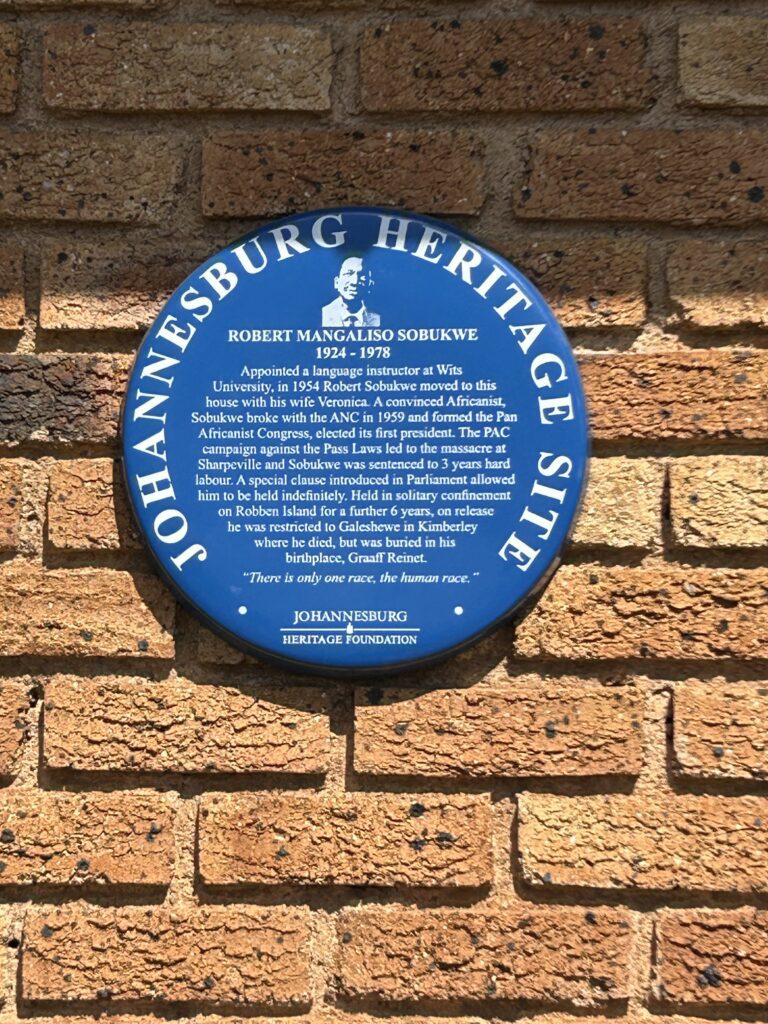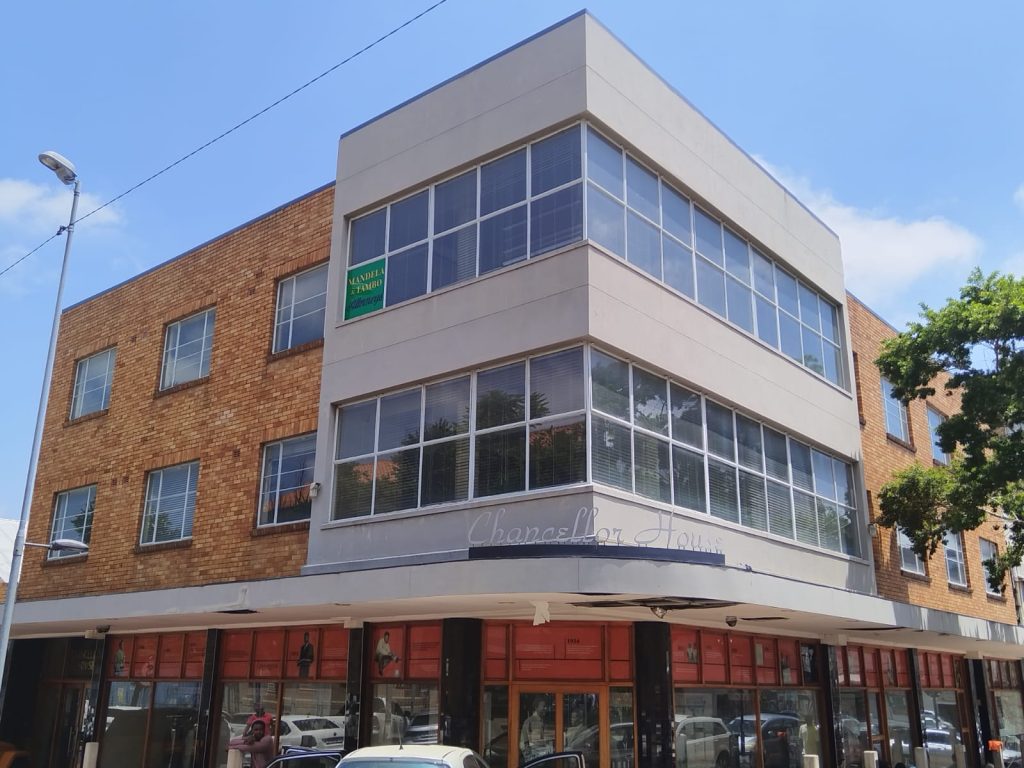Originally, this was a standard four-house, officially designated a 51/6 type. The main bedroom measured 8ft 11ins by 9ft ins. The four-roomed house has been completely transformed with two or more additional rooms, including a car garage attached to the main house.
Robert Mangaliso Sobukwe was born in Graaff-Reinet in 1924. His political activism started as a student at the Fort Hare University where he completed his junior teachers’ degree in 1949. He was active in the ANC Youth League, and later became chairman of the Fort Hare Branch. Sobukwe was National Secretary of the Youth League, in the early 1950’s, while teaching in Standerton, Mpumalanga. After his participation in the Defiance Campaign of 1952, he was expelled from his teaching job. He relocated to Soweto and joined the Mofolo Branch of the African National Congress.
Sobukwe and his wife, Veronica were the first people to live in number 684 Mnisi Street in Mofolo. The house did not have electricity, there was one cold water tap in the backyard and had waterborne sewage. A new house, such as theirs was handed over with rough-finished walls, no interior doors, no ceilings below the asbestos roof, and bare earth for the floors for cement in the kitchen. The Sobukwes hired and paid workers to plaster the walls, put down wooden floors, and put interior doors and put plastic tiles on the kitchen floor.
Their first child, a daughter, Miliswa was born shortly before they moved into the new house. Then came a son, Dinilesizwe and finally twin boys, Dalindeyebo and Dedanizizwe. The house had a small garden where he spent much time growing flowers, and was proud of his tomatoes, pumpkins, cabbages and potatoes.
Sobukwe acquired a post as a junior lecturer in African Languages at Wits University, and in 1958 he graduated with an honours degree.
In November 1958, he and a group of Youth League members pulled out of the ANC and launched the PAC in April 1959. After his arrest on March 21, 1960 for the nationwide anti-pass campaign that he led, he was sentenced to three years hard labour. At the end of his sentence, the all-white Parliament passed the General Law Amendment Act – better known as the Sobukwe “Clause” which empowered the government to keep in jail anyone who had completed his/her sentence. This was to be renewed annually. This clause was meant and used only for Sobukwe. At the end of his sentence he was thus transferred to Robben Island (in 1963) where he stayed until 1969. On Robben Island he was not kept in a cell, but isolated in a separate house built for him, so that he should not influence the other prisoners. On 27 February 1978 Robert Mangaliso Sobukwe passed away as it was reported, from lung cancer.

General Protection: section 34 (1) Structures under the National Heritage Resources Act

A culmination of research gathered over many years, the Online Johannesburg Heritage Register is being launched on Nelson Mandela Day 18 July 2025.
Among the many heritage sites featured is Chancellor House, the downtown offices of Mandela and Tambo Attorneys in the 1950s. After having been vacant and shuttered for more than a decade, this iconic building is being revived and brought to life once again as offices for the Community Development Department, which oversees the City’s Arts, Culture & Heritage Services.